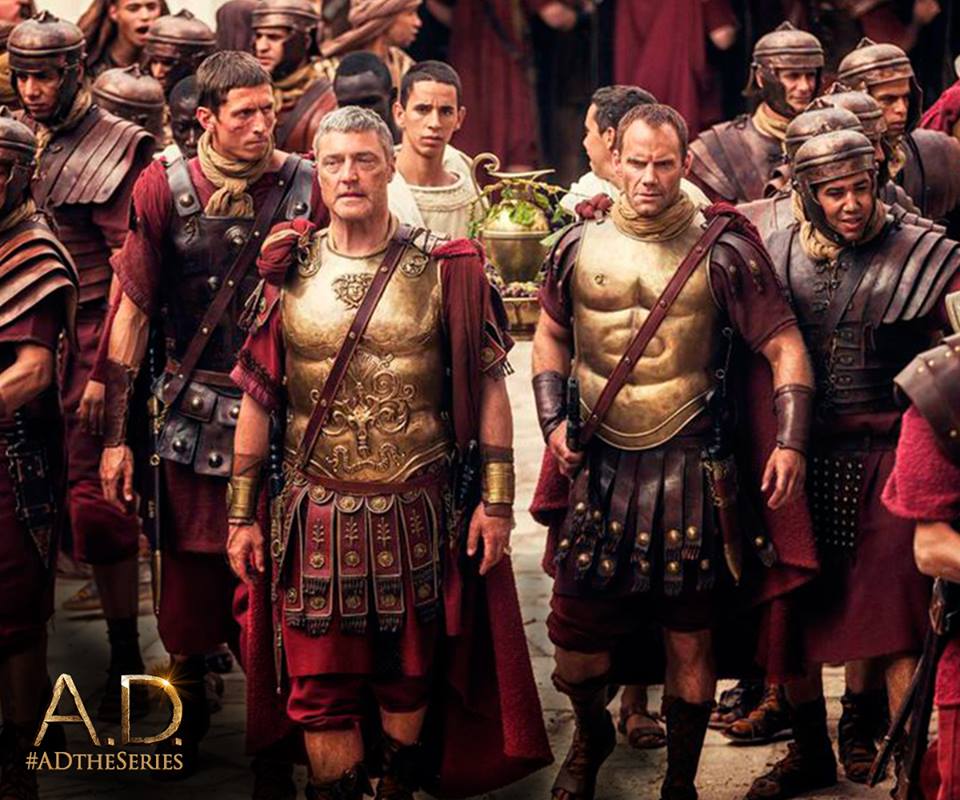The third episode of A.D. the Bible Continues deals with the period between the Ascension and Pentecost, and then a bit beyond that into Acts 5. The centerpiece of this episode is of course the Pentecost event itself, which as it were is the bright foreground of the story, with the dark clouds of Roman and priestly machinations being the frame or backdrop of the story. For my money there is too much of the latter, including too much bloodshed, and too little focus on the former. One nice aspect of this episode however is the introduction of the relationship of Peter to his daughter Maya, which of course is fiction but presents us with another side of Peter as a married man (his wife is said to be dead), with at least one child. The violence and the dramatic music ratchet up the tension in the tale, while the introduction of Maya ratchets up the pathos, as Peter’s daughter follows him to dangerous Jerusalem.
Part of the goal of this series is of course to put human flesh on the bare bones narratives in Acts, but my principle would be that the fleshing out needs to comport with the bones which provide the structural outline on which the embellishment must either hang properly like true flesh or create a distortion. What we want with the ‘fleshing out’ is verisimilitude not plastic surgery that distorts. One way the narrative is woven together is by having a centurion named Cornelius be Pilate’s right hand man. Stay tuned to see if he is the same Cornelius that shows up in Acts 10 In the case of Peter’s marital state, we do know that Peter was married, and 1 Cor. 9.5 suggests his wife was in fact still alive in the A.D. 50s when Paul wrote 1 Corinthians. Nevertheless, the character of Maya is a believable one and it adds a nice dimension to the depiction of Peter.
The Pentecost event is depicted in dramatic fashion, in the upper room but not thereafter, and one thing one can count on Burnett and Downey not to do is ignore or play down the miraculous. That’s the good news.
What’s missing in this episode? Unfortunately, we do not have the important story about the Ascension of Jesus, either in its Lk. 24 version or in its Acts 1 version, nor do we have the story of the filling up of the Twelve either. What we do have is a focus on Peter and John, and how they end up incarcerated after a beating. We could have used a good deal more focus on the Pentecost sermon of Peter and the response of the people to it, but this is mostly omitted by the screenplay writer in order to further dwell on Pilate and his brutality and Caiaphas and his machinations.
In terms of balance it would have been better to focus more on the bright foreground, and less on the dark rumblings in the background. There is however the interesting tidbit about the trial before the Sanhedrin of Jesus transpiring at night, and therefore being possibly illegal. We also continue to have the story of the Zealots, who in this episode are looking for an opportunity to do away with Pilate. In fact we do not know that Pilate was present for the feast of Pentecost in A.D. 30, much less that he invaded the sanctity of the Jewish temple. This would for sure have made the Zealots burn with rage, but in fact there is no basis for this conjecture at this point. Pilate made his mistakes in regard to the Temple much earlier in his reign in Judaea when he tried to introduce the Roman eagle standards into the temple precincts. He appears to have learned from these earlier mistakes by the time we get to A.D. 30. Notice how in the TV show the Zealots connect Pilate going into the Temple with ‘the abomination that makes desolate’ (a probable reference at least in Daniel to Antiochus Epiphanes and his profaning the temple in Jerusalem).
We are also introduced in this episode to Herod Antipas and his wife Herodias (complete with dancing girls), who did come to the earlier Passover feast, and may have come from Galilee for the Pentecost feast as well. What is not likely correct is the notion that Herod, the ruler of Galilee would have seen himself as the warden and guardian of the Temple! Not when he was a ruler in a non-Roman territory rather than in the province of Judaea.
One of the most interesting features of this episode is that while the miracle of Pentecost is played up, by contrast the miracle of healing the lame man seems very mundane and tame (Acts 3.1-10). That’s o.k. We can expect more miracles as the story goes along. Also interesting is the fact that the lame man is played by the same person who accused Jesus of having demons in the excellent Gospel of John film. I like him better as the lame man. Stay tuned for more revelation and surprises.













